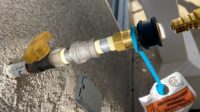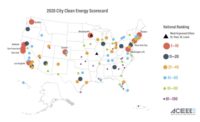New York has finalized regulations designed to significantly reduce the use of greenhouse gases called hydrofluorocarbons—a refrigerant common in air-conditioning systems. New York joins California and Colorado, among other states, in finalizing regulations that phase out HFCs.
With this action, expected to be effective in November, “New York will help drive manufacturers to adopt better, cleaner products, and pioneer clean energy solutions that not only protect our health and our precious natural resources, but also grow our economy," said Gov. Andrew Cuomo (D) in a Sept. 23 release from the New York State Energy Research and Development Authority (NYSERDA).
HFCs are commonly used in a wide variety of applications, including refrigeration, air-conditioning, building insulation, fire extinguishing systems and aerosols. The gases have high global warming potential, raising concern about their impacts as they become increasingly used as replacements for ozone-depleting substances, according to the U.S. Environmental Protection Agency (EPA).
The state's Dept. of Environmental Conservation regulations finalized Sept. 23 will adopt changes to EPA's Significant New Alternatives Policy, which EPA has not been enforcing under the Trump Administration as it revises the Obama-era rule.
Publication of the Notice of Adoption, filed with the New York Dept. of State, is expected in the Oct. 14 State Register. The rule goes into effect 30 days after filing, according to NYSERDA.
Bans on HFC Use
The regulations ban the sale, installation and commercial use of certain HFC refrigerants in new or retrofitted food refrigeration equipment, large air-conditioning equipment or chillers and vending machines. The regulations also place prohibitions on substances used as aerosol propellants and foam-blowing agents in new consumer products.
The prohibitions will take place over the next four years and are expected to reduce HFC emissions by more than 20% of projected levels by 2030, or a cumulative total of 17 million metric tons of carbon dioxide-equivalent emissions.
The regulations complement NYSERDA’s $3-million Next Generation HVAC Innovation Challenge. The initiative is designed to encourage better heating, ventilation and air conditioning systems for buildings. The action will also assist the state in reducing greenhouse gas emissions 40% by 2030 on a path to economy-wide carbon neutrality, says NYSERDA.
The regulations were developed by the State Department of Environmental Conservation in collaboration with partner states of the U.S. Climate Alliance. After the federal government announced its intention to withdraw from the Paris Agreement on climate change, New York joined with California and Washington State to form the alliance, which is dedicated to upholding the goals of the Paris agreement.
The U.S. Climate Alliance has grown to include 25 governors representing the majority of the U.S. gross domestic product, says NYSERDA. About a dozen other states have adopted laws banning HFCs or announced their intention to require the reduction of the use of the pollutant.




Post a comment to this article
Report Abusive Comment